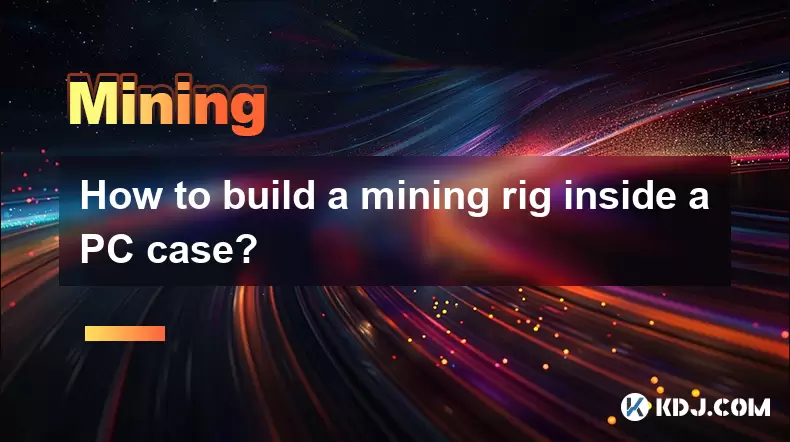-
 Bitcoin
Bitcoin $116700
0.24% -
 Ethereum
Ethereum $3973
4.34% -
 XRP
XRP $3.283
7.68% -
 Tether USDt
Tether USDt $1.000
0.01% -
 BNB
BNB $789.8
2.27% -
 Solana
Solana $176.2
3.31% -
 USDC
USDC $0.9999
0.00% -
 Dogecoin
Dogecoin $0.2238
5.14% -
 TRON
TRON $0.3389
-0.51% -
 Cardano
Cardano $0.7907
4.03% -
 Stellar
Stellar $0.4527
10.02% -
 Hyperliquid
Hyperliquid $41.07
4.27% -
 Sui
Sui $3.794
1.77% -
 Chainlink
Chainlink $19.49
10.40% -
 Bitcoin Cash
Bitcoin Cash $580.9
0.74% -
 Hedera
Hedera $0.2617
4.32% -
 Avalanche
Avalanche $23.41
3.67% -
 Ethena USDe
Ethena USDe $1.001
-0.03% -
 Litecoin
Litecoin $122.4
1.38% -
 Toncoin
Toncoin $3.364
1.49% -
 UNUS SED LEO
UNUS SED LEO $8.988
0.37% -
 Shiba Inu
Shiba Inu $0.00001295
2.82% -
 Uniswap
Uniswap $10.62
5.75% -
 Polkadot
Polkadot $3.922
4.46% -
 Dai
Dai $1.000
0.01% -
 Bitget Token
Bitget Token $4.494
2.15% -
 Monero
Monero $268.0
-1.30% -
 Cronos
Cronos $0.1523
3.68% -
 Pepe
Pepe $0.00001127
4.43% -
 Aave
Aave $285.4
4.85%
How to calculate the currency returns of CPU mining?
Accurate CPU mining return calculations require assessing hashrate, mining rewards, electricity costs, pool fees, and fluctuating mining difficulty to determine profitability and ROI.
Mar 02, 2025 at 06:42 pm

Key Points:
- Understanding Hashrate and its impact on mining rewards.
- Calculating electricity costs and their influence on profitability.
- Factors affecting mining difficulty and its effect on returns.
- Accounting for mining pool fees and their reduction of profits.
- Determining the ROI (Return on Investment) of your CPU mining operation.
How to Calculate the Currency Returns of CPU Mining?
CPU mining, while less lucrative than GPU or ASIC mining for most cryptocurrencies, can still be a viable option for certain coins and those with readily available computing power. Accurately calculating your returns requires careful consideration of several factors. Let's break down the process step-by-step.
1. Determining Your Hashrate:
The first step is to determine your CPU's hashrate. This represents the computational power your CPU contributes to the mining process, measured in hashes per second (H/s), kilohashes per second (kH/s), or megahashes per second (MH/s). Different CPUs have vastly different hashrates. You can use specialized software or online calculators to measure your specific CPU's performance for the chosen cryptocurrency's mining algorithm.
2. Understanding Mining Rewards:
Cryptocurrency mining rewards vary. Some coins offer a fixed reward per block mined, while others use a dynamic reward system that changes over time. You need to consult the specific cryptocurrency's documentation to understand its reward structure. The reward is usually paid in the cryptocurrency itself.
3. Calculating Your Expected Earnings:
Once you know your hashrate and the block reward, you can estimate your earnings. This is not an exact science because the difficulty of mining changes constantly. However, you can use online mining calculators that factor in the current difficulty, your hashrate, and the block reward to provide an estimate of your potential earnings per day or per month.
4. Accounting for Electricity Costs:
Electricity consumption is a significant expense in CPU mining. Your CPU will consume a certain amount of power while mining, and this needs to be factored into your calculations. To calculate your electricity cost, you'll need to know your CPU's power consumption (in watts), your electricity price per kilowatt-hour (kWh), and the number of hours your CPU is mining daily.
5. The Impact of Mining Pool Fees:
Most CPU miners join mining pools to increase their chances of finding a block and receiving a reward. Mining pools typically charge a fee for their services, usually a percentage of your earnings. This fee needs to be subtracted from your estimated earnings to get a more accurate net profit.
6. Mining Difficulty and its Fluctuation:
The difficulty of mining a cryptocurrency adjusts periodically to maintain a consistent block generation rate. A higher difficulty means it takes more computational power to mine a block, reducing your chances of earning rewards. This difficulty adjustment is a critical factor impacting your profitability and needs to be considered when projecting your long-term returns.
7. Calculating Your Return on Investment (ROI):
To calculate your ROI, you need to consider your initial investment (cost of your CPU, any cooling upgrades, and other related expenses) and compare it to your net earnings after deducting electricity costs and pool fees. The ROI calculation will give you an idea of how long it will take for your mining operation to pay for itself.
8. Software and Monitoring Tools:
Various software programs can monitor your mining activity, providing real-time data on your hashrate, earnings, and electricity consumption. These tools are invaluable for tracking your progress and making informed decisions about your mining operation. Choosing the right software for your specific cryptocurrency and hardware is crucial.
Frequently Asked Questions:
Q: Is CPU mining profitable?
A: Profitability depends on several factors, including the cryptocurrency's price, mining difficulty, electricity costs, and your CPU's hashrate. For most popular cryptocurrencies, CPU mining is generally not as profitable as GPU or ASIC mining due to lower hashrates and higher energy consumption relative to the reward. However, some less-popular cryptocurrencies might offer better opportunities.
Q: What are the best CPUs for mining?
A: CPUs with high clock speeds and multiple cores are generally better suited for mining. However, even high-end CPUs may not compete with specialized mining hardware. The optimal CPU will depend on the specific cryptocurrency's mining algorithm.
Q: How can I reduce my electricity costs for CPU mining?
A: Consider using energy-efficient CPUs, mining during off-peak hours when electricity rates are lower, and employing efficient cooling solutions to reduce power consumption.
Q: What are mining pools, and why should I use them?
A: Mining pools are groups of miners who combine their computing power to increase their chances of solving a block and earning a reward. Joining a pool is generally recommended, especially for CPU mining, as solo mining is unlikely to yield significant returns due to the low hashrate of CPUs.
Q: How often does the mining difficulty change?
A: The frequency of difficulty adjustments varies depending on the cryptocurrency. Some cryptocurrencies adjust difficulty every few days, while others adjust it less frequently. You need to consult the specific cryptocurrency's documentation for details.
Disclaimer:info@kdj.com
The information provided is not trading advice. kdj.com does not assume any responsibility for any investments made based on the information provided in this article. Cryptocurrencies are highly volatile and it is highly recommended that you invest with caution after thorough research!
If you believe that the content used on this website infringes your copyright, please contact us immediately (info@kdj.com) and we will delete it promptly.
- Bitcoin, Litecoin, and Avalanche: Decoding the Crypto Buzz in the Big Apple
- 2025-08-09 00:30:12
- Pengu Takes Flight: Can This Solana Meme Coin Conquer the Top 3?
- 2025-08-09 00:50:13
- Coinbase's Big Bet: DEX Trading and the Everything App Vision
- 2025-08-09 01:30:12
- Ethereum and Shiba Inu: Navigating the Bull Move
- 2025-08-09 00:35:12
- Dogecoin, AI Coins, and CMC Listings: What's Hot and What's Not
- 2025-08-09 01:35:51
- Navigating the Crypto Market in 2025: Smart Decisions for Meme Coin Investing
- 2025-08-09 00:55:55
Related knowledge

What is "proof-of-work" and how does it relate to mining?
Aug 07,2025 at 02:03pm
Understanding the Concept of Proof-of-WorkProof-of-work (PoW) is a consensus mechanism used in blockchain networks to validate transactions and secure...

What are the differences between mining on Windows vs. Linux?
Aug 06,2025 at 11:29pm
Overview of Cryptocurrency Mining PlatformsCryptocurrency mining involves using computational power to solve complex cryptographic puzzles and validat...

How to use an old computer for cryptocurrency mining?
Aug 07,2025 at 12:42pm
Understanding the Feasibility of Using an Old Computer for MiningUsing an old computer for cryptocurrency mining may seem outdated, but it is still te...

Can you mine cryptocurrency using solar power?
Aug 07,2025 at 12:00am
Understanding the Basics of Cryptocurrency MiningCryptocurrency mining involves validating transactions on a blockchain network by solving complex cry...

How to build a mining rig inside a PC case?
Aug 06,2025 at 11:01pm
Understanding the Basics of a Mining Rig in a PC CaseBuilding a mining rig inside a PC case involves transforming a standard computer chassis into a d...

What are the best cryptocurrencies to mine with an ASIC?
Aug 08,2025 at 01:22am
Understanding ASIC Mining and Its Role in CryptocurrencyASIC stands for Application-Specific Integrated Circuit, a specialized hardware designed to pe...

What is "proof-of-work" and how does it relate to mining?
Aug 07,2025 at 02:03pm
Understanding the Concept of Proof-of-WorkProof-of-work (PoW) is a consensus mechanism used in blockchain networks to validate transactions and secure...

What are the differences between mining on Windows vs. Linux?
Aug 06,2025 at 11:29pm
Overview of Cryptocurrency Mining PlatformsCryptocurrency mining involves using computational power to solve complex cryptographic puzzles and validat...

How to use an old computer for cryptocurrency mining?
Aug 07,2025 at 12:42pm
Understanding the Feasibility of Using an Old Computer for MiningUsing an old computer for cryptocurrency mining may seem outdated, but it is still te...

Can you mine cryptocurrency using solar power?
Aug 07,2025 at 12:00am
Understanding the Basics of Cryptocurrency MiningCryptocurrency mining involves validating transactions on a blockchain network by solving complex cry...

How to build a mining rig inside a PC case?
Aug 06,2025 at 11:01pm
Understanding the Basics of a Mining Rig in a PC CaseBuilding a mining rig inside a PC case involves transforming a standard computer chassis into a d...

What are the best cryptocurrencies to mine with an ASIC?
Aug 08,2025 at 01:22am
Understanding ASIC Mining and Its Role in CryptocurrencyASIC stands for Application-Specific Integrated Circuit, a specialized hardware designed to pe...
See all articles

























































































